Wheels for polishing on a grinding machine

Sharpeners can be found in many workshops. These devices allow you to sharpen and polish various parts. In this case, various types of grinding wheels are used. They all differ in the type of abrasive material, size, hardness and grain size. Today we will talk about the features of these circles.
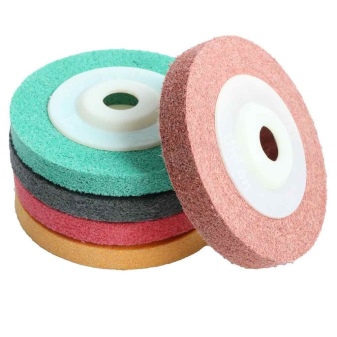
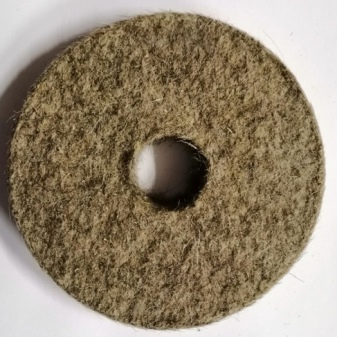
Features and purpose
Wheels for electric grinding machines allow you to simplify the polishing process as much as possible and at the same time get the highest quality result. These grinding products are designed to remove a certain amount of material from the surface of the processed structures.
This method removes irregularities, sharpens various devices.
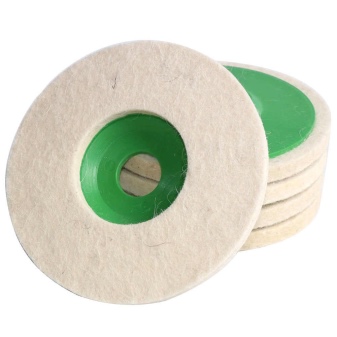
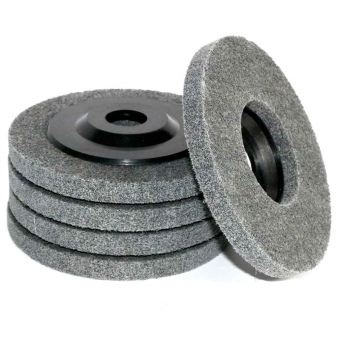
For some types of work, sometimes special grinding wheels with non-standard configuration and dimensions are required. In other models, they will differ in grain size, shape. Most often, these polishing products are used for a complete set of factory equipment.
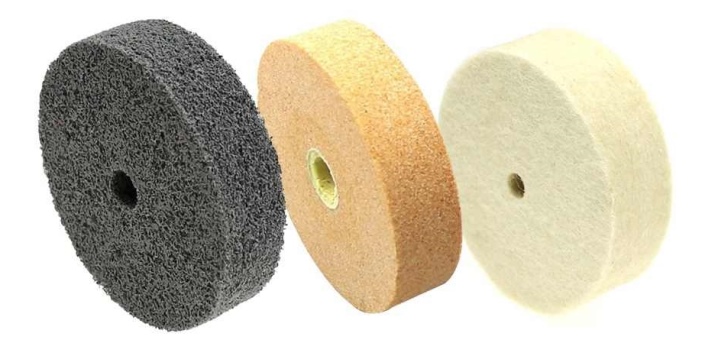
Types and sizes
The main requirement for the material that is taken to create these circles is presence of abrasive parameters... At the same time, they must have good mechanical strength. High-quality models will not collapse and deform under the influence of an aggressive environment.
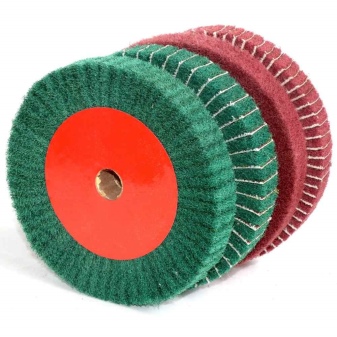
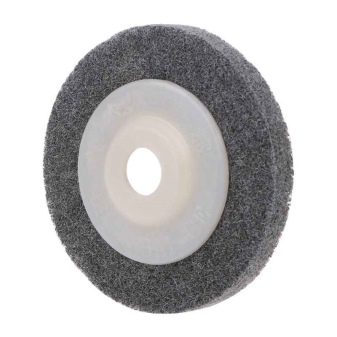
All grinding wheels, depending on the material from which they are made, can be divided into several separate varieties.
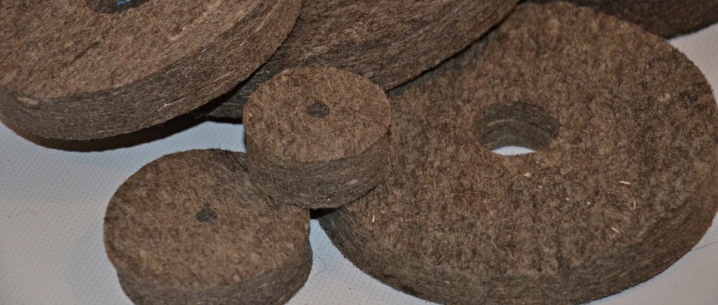
Felted
As a raw material for the production of such products, special pressed wool is taken. This is a fairly effective grinding method, which is provided due to the special protein nature of the material used, which is used on an electric grinder. The wool fibers are saturated with keratin, which provides interaction with a wide variety of components of the processed instruments.

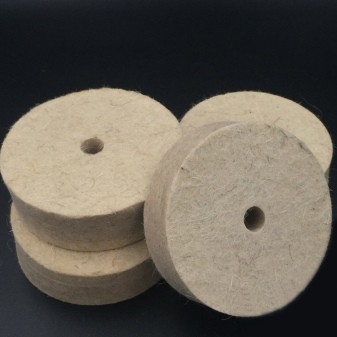
These polishing wheels can also be divided into 3 separate groups:
-
coarse-haired;
-
fine-haired;
-
semi-coarse-haired.
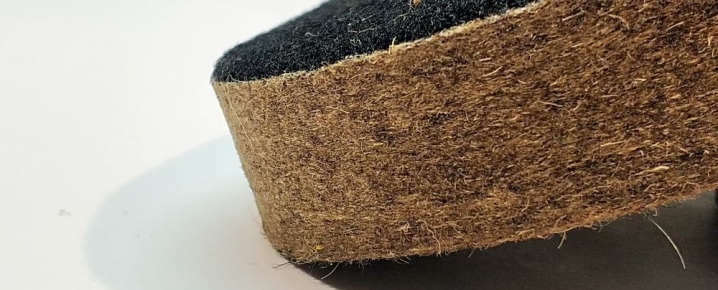
The strongest and most durable models are created from dense bases. During the production process, woolen components undergo careful processing and hardening, which makes the products as hard and durable as possible. There are some important rules to keep in mind when caring for such circles. If they will not be used for a long time, then you need to cover them to reduce the risk of scratches and chips on their surface. It is also recommended to clean the circles as carefully as possible after each use. During rotation, you can bring a pumice stone to it, you should not press too hard. It is not necessary to use various additives and pastes, if there is no urgent need for it.
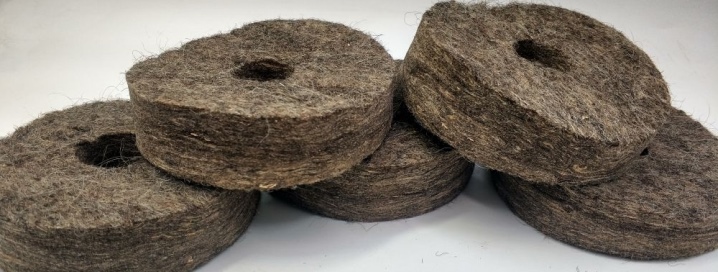
Volcanic
These varieties are intended for clean polishing and grinding of metal structures. They allow you to remove all the rusty layer from the tools and give them a shine. The composition of such circles includes a special heavy-duty rubber, which is vulcanized during the production process. A special abrasive material is then added to this component. The vulcanized base has excellent heat capacity.
Such products can be both flexible and rigid.
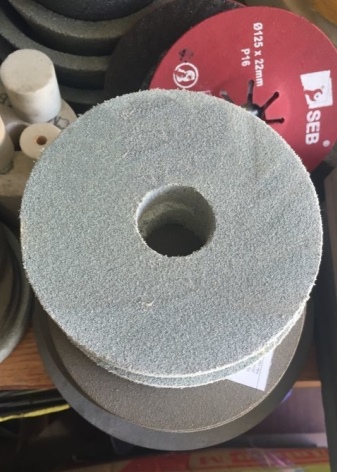
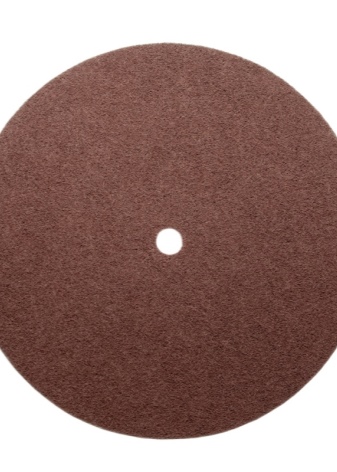
Felt
Such varieties are used at the stages of intermediate processing before finishing polishing.... The felt itself is a fairly thin fabric base, which has a good density. It allows you to get rid of even the smallest irregularities present on the processed structures. Before use, the felt base must be moistened with a special liquid.
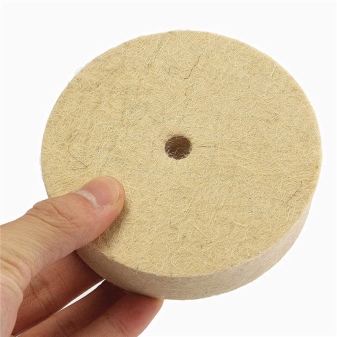
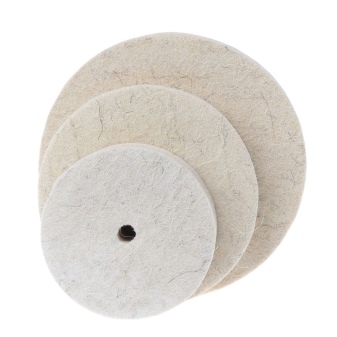
Foam
These grinding wheels are manufactured from a polyurethane base. All of them are classified into several separate groups, each of which has its own color and shape.
-
So, black models are intended for surface treatment, which are coated with paints and varnishes. They have a rather soft texture.
-
Blue models have an average level of rigidity. They are applied at intermediate stages of processing.
-
Orange circles have an average stiffness, high density and good elasticity.
-
White products are made of hard and durable foam rubber. They should be used for initial coarse sanding.

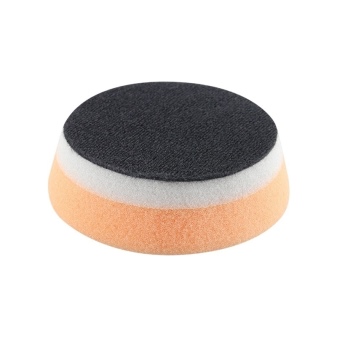
Foam samples can be either flat or embossed. The first option may contain small abrasive particles and can easily remove scratches on smooth surfaces. Smooth models are often used to clean ceramic tiles. Relief products for grinding have a non-uniform working part, they help to cool electrical equipment during long-term polishing.
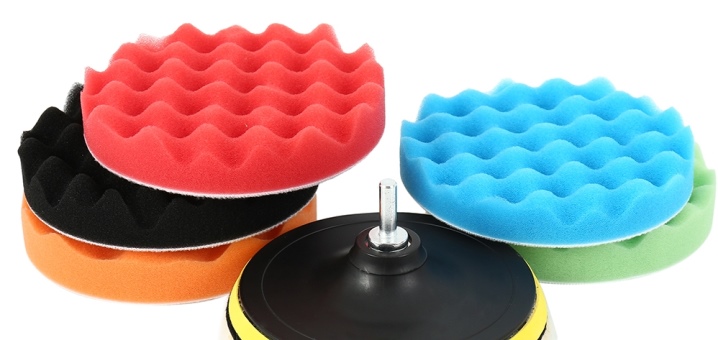
Abrasive
These buffs are used for medium to coarse metal, wood, concrete and plastic applications. Such products may contain particles of various origins. Most often, pomegranate is used, which is a natural material, it is distinguished by the greatest flexibility, elasticity, such a component is best suited for wood processing. And also the wheels may contain particles of silicon carbide, which is considered a high-strength and reliable material. It will be perfect for rough polishing of metal, wood and plastic. Ceramic elements allow you to cope with large irregularities on the surface of the processed structures.
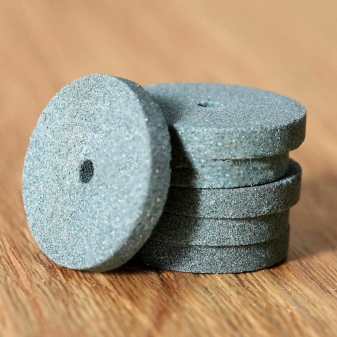
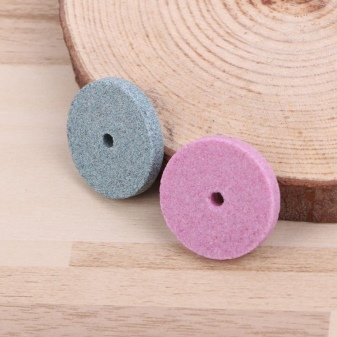
Aluminum oxide is used for delicate polishing work. At the same time, it will not leave small dents and scratches on the products.
Wheels for grinding machines can have different dimensions. But the standard options are 125 mm, 150 mm, 175 mm and 200 mm in diameter. The fit is most often 32 millimeters. The thickness of products can vary from 10 to 25 millimeters.
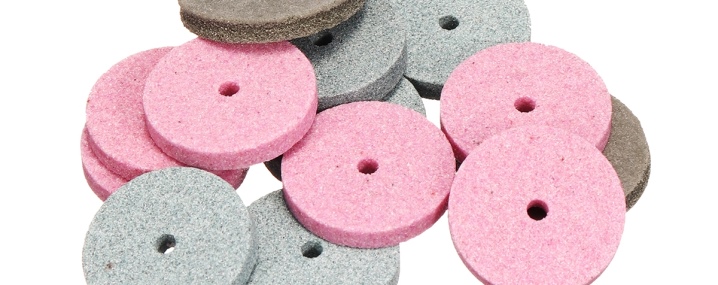
How to choose?
Before purchasing such a polishing wheel, you should pay attention to the most significant nuances of the choice. First of all, look at the composition and material from which the sample is made. After all, each individual model can be designed for coarse, medium, intermediate polishing. Some varieties are used only for delicate processing of smooth or varnished surfaces.

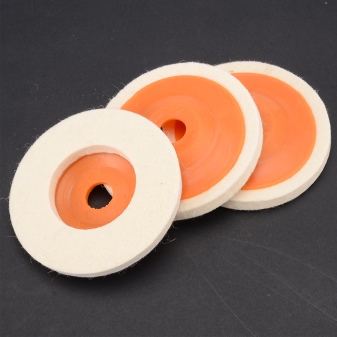
In addition, individual samples are used only for processing plastic or wood, metal, there are products for sharpening drills. There are special sharpening varieties for saws, their edge is formed at a slight angle, this allows for the convenience of processing between the teeth.
And also before buying, you should definitely pay attention to the size of the grinding wheels. In this case, the choice will depend on the dimensions of the parts that need to be processed in the future, as well as on the dimensions of the sharpening equipment itself.
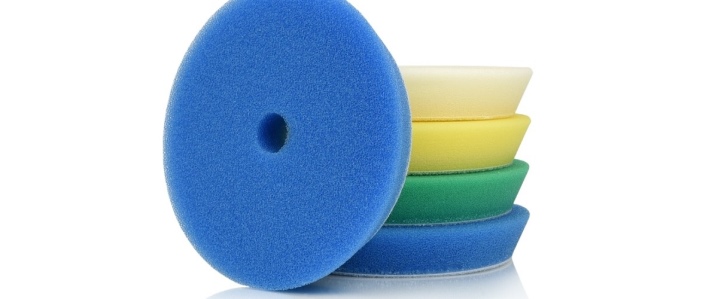
Take into account the degree of graininess of the circle. These sharpening parts can have different grain, it is denoted by the following values: 8H, 12H, 16H, 25H, 40H. Moreover, the higher the number, the larger the grain, the coarser the grinding and polishing of the parts.
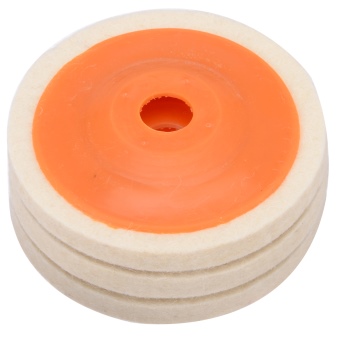

You should also look at the shape of these polishing tips. Mostly there are models in the form of a cup, a plate or a simple straight profile.The choice in this case will depend on the type of work being performed, as well as on the shape of the material that needs to be processed.
If you are looking for such a disc for polishing and grinding metal, then look at its colors. So, white samples are intended for sharpening a simple steel base, shovels, kitchen knives, axes. They are labeled A25.
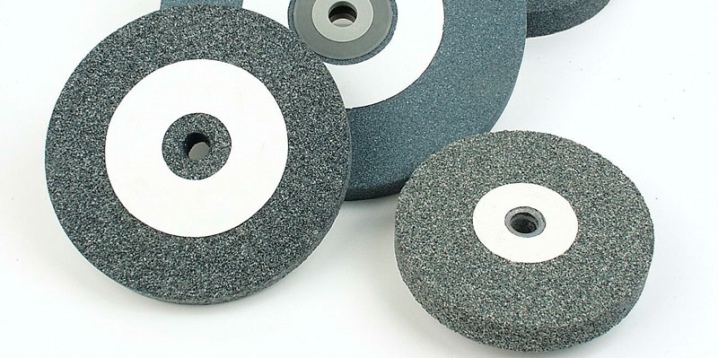
Often, manufacturers add special pigments when making these circles, as a result, they can acquire a blue or orange tint. In the process of using simple metal on such a nozzle, the highest quality sharpening will be obtained, because the composition of the product itself is quite soft, the temperature values during friction are small, therefore, blue scale will not appear on the metal base.
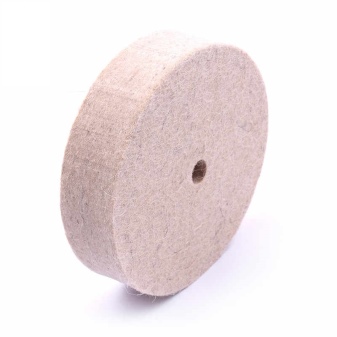

Models with a green color are used for sharpening carbide structures. They are often taken for processing metal drills, knives for woodworking. They are labeled 64C. It should be remembered that when working with these varieties on the metal, as a result, dark scale may appear, since in this case there will be a rather high temperature.
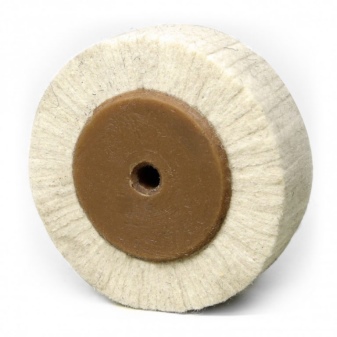
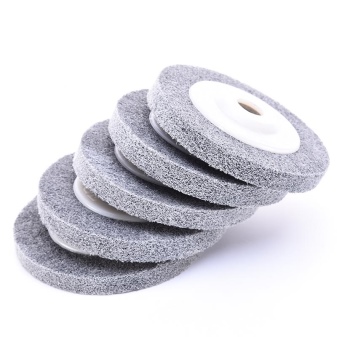












The comment was sent successfully.